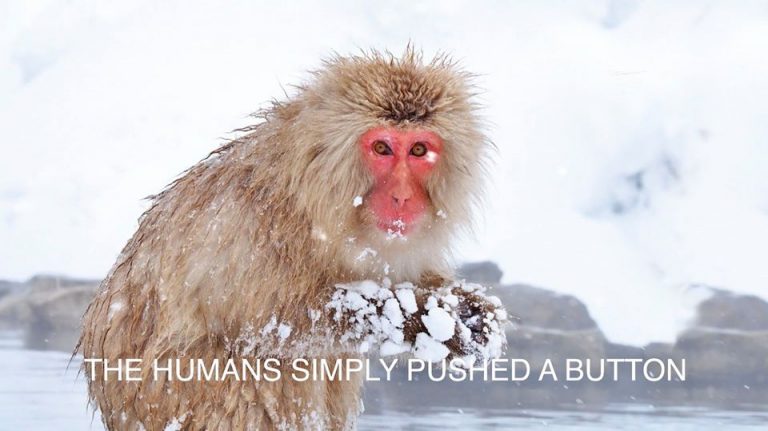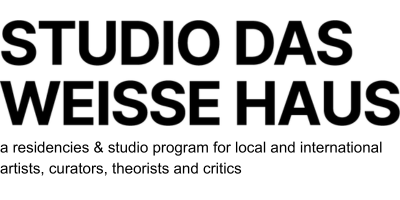Weekly Conversations… with Malou Solfjeld

Malou Solfjeld, based in Copenhagen, is curating the group exhibition “New homes for horses, cats and canaries” opening on April 21, 2020 at das weisse haus and presneting works by Will Benedict, Gillian Brett, Nanna Debois Buhl, Rachel Fäth, Max Freund, Ebru Kurbak, Judith Milz, Elisabeth Molin, Ryts Monet, Tintin Patrone, Sofie Thorsen, Isaac Chong Wai, Filip Vest, Jun Yang, Catherine Sarah Young, Helen Zeru, et al.
The residency is organized in cooperation with BLOCKFREI.
Your exhibition centers around topics of temporary inhabitance, belonging and the concept of home. How do horses, cats and canaries fit in there?
The horses of Vienna is characterizing the feeling and the history of the city in so many ways. First of all, we have the Spanish riding school with the famous Lippizaner horses, next to them we have the Wurstelstand selling sausages with pferde-leberkäse and if you look back in time to literature during the world wars, we can find a female writer Kay Boyle sending out ”The white horses of Vienna” in 1935 (!!!) – she even won the O. Henry Award for it same year (!!!). And the book is basically about sharing a home with someone who has different roots or beliefs than yourself, Boyle observing rising nazism and antisemitism during her time in Austria.
This thing about sharing different roots, reminds me of a great quote I heard the other day, it was a theater director from Rwanda (invited to the WWIII conference organized by Kader Attia here in Vienna, collaboration between Burgtheater and Kunsthalle Wien), who said ”I’m always torned about my roots, but I’m not a tree. I have feet and I walk. And I say to those, who think about double culture, that I have one culture. Mine. Contemporary. I do not have a double culture. I am not a zebra.” I think this was a great quote, and in general this man really moved me with his story and his words, and made me realize that if I wanna do an exhibition about home and temporality, I need to understand the past of my own home, that is Denmark, and I therefore decided to include works of Danish artists dealing with colonial history in the Carribeans.
Despite the fact that human beings are not trees and not zebras, I believe that we are all more connected to the zebras, the trees and the horses, than we sometimes are aware of. This is called biodiversity. We depend on each other. And time is running out. Therefore I wanted to make an exhibition about imaginary time or, in invisible time, or a different visualisation of time travelling at least.
So back to the horses: Last year I was travelling through Vienna in the middle of the Ibiza gate. Surrounding myself with mostly the ”creative class”, it seemed like a revolutionary fiesta, singing Vengaboys in the streets, everyone was so happy that FINALLY something would change. So the primeminister stepped back and they got their election, and then half a year later, I asked my friends from here: What happened then? Any changes? And the horses came up. Because there’s been a big discussion about police horses, what they resemble, why they are important and what seems to concern the most, how much do they cost… After all, the policehorses (I think we’re talking about 14 horses maximum, but who counts) were fired and therefore again ”on the market”, looking for a new home. (It’s funny because in Denmark we’re somehow searching for new policehorses, because our right wing party really wants them back in the streets, but so far we haven’t found any that are good enough. I guess it’s also a question of race, adaption ability etc….). What seems like a smaller consequence of the Ibiza-fuelled election, actually means no home for somebody. In this case the horses. And also, who told them to be policehorses in the first place? This discussion of course pays an arthistorical hommage to Tania Bruguerra’s Taitlin’s Whisperer performance with the police horses at the Tate Modern, but is in general a question of how we talk about and interact with horses. In English, when you make a mistake, you say: Just get back in the saddle, meaning like try again, better luck next time… Again, mentioning time, when is next time? Will there be a next time? I doubt it, we’re running out of time! But talking about horses, in German, you call your best friend someone to steal horses with. Am I the only one who wonders how many people Mr. Kurz is stealing horses with at the moment? Talking about him, he started the year, 2020, out by saying: ”I believe, we can protect both the climate and the borders”. And I was really wondering what he meant… The climate crisis is a threat and a reality beyond borders, and if we shall have any chance of surviving this, we NEED to think less walls, more bridges, therefore I’m happy to include a couple of artworks in the show concerned with building bricks, one is made out of Haribo gummybears, you see, the bears, we also have to remember them in this game, it’s not just about zebras, tress, humans, horses, cats and canaries, it’s also about gummybears!
But if you wanna know about the cats, except that they also resemble the anthropocene human-dominant gaze on a species that we have domesticated into the extreme, I’m also refering to three other kinds of cats, very specifically: Schrødingers cat (a quantum mechanical thought experiment where the cat is both dead and alive at the same time), Cat’s Craddle in the sense of Donna Haraway’s Playing stringfigures with companionspecies and Cat’s Craddle as in the title of Kurt Vonnegut’s 1963 sci-fi novel about man’s relationship to technology and nuclear power. We’ll read about all three in the reading circle, please feel free to join!
In preperation to the exhibition you are hosting a reading circle at studio das weisse haus. What kind of questions are you looking to open up for discussion by reading together?
Reading and writing is imaging and thus manifesting alternative realities in the world, and I think that we, at the moment almost living in too interestering times, to quote the fake news from Venice last year, need to now, more than ever, remember the possibility of imagining a different reality. Like remember when you first heard about Pippi Longstocking living alone in a big house carrying a horse on her back and making pancakes for her best friend, the monkey Hr. Nilsson. Didn’t the world turn completely upside down whenever you entered her universe? It most certainly did for me, and therefore we’re reading Pippi Longstocking tomorrow for our first reading session. Paired with Deleuze & Guattari on the rhizome and becoming-animal.
Quoting my great heroine Ursula K. Le Guin: ”Imagination is not a means of making money. It has no place in the vocabulary of profit-making. It is not a weapon, though all weapons originate from it, and their use, or non-use, depends on it, as with all tools and their use. The imagination is an essential tool of the mind, a fundamental way of thinking, an indispensable means of becoming and remaining human …” And she continues to ”home” and since this topic is closest to my heart, I have to share it with you here, and then I hope that the meaning of the reading circle gets clear(er): ”Home is imaginary. Home, imagined, comes to be. It is real, earlier than any other place, but you can’t get to it unless your people show you how to imagine it— whoever your people are. They may not be your relatives. They may never have spoken your language. They may have been dead for a thousand years. They may be nothing but words printed on paper, ghosts of voices, shadows of minds. But they can guide you home. They are your human community.”
You’ve spent three years in Mallorca working as a curator and residency facilitator at CCA Andratx. Coming from Mallorca – how do you like it in Vienna so far?
I love Vienna! You know about global warming they say the world’s temperature has already increased with 1 degree but Vienna is apparently 2, so during February it felt almost like Mallorca in the sun, strolling through Prater and along the Donaukanal.
However, I do miss the sea, (which is also the reason of the higher temperatures here, since we’re landlocked). Mallorca is beautiful and living there gave me a chance to delve into nature in a very unique way. But my job was similar to what I’m doing now in Vienna; in Mallorca I worked for CCA Andratx, a wonderful residency program where artists come from all over the world and together we would realize exhibitions for the kunsthalle funded by Patricia and Jacob Asbæk in the middle of nowhere, at the foot of the Tramuntana mountains of the westcoast of the island. If you ever get chance, you should visit, it’s a magical place and there’s an open call for artists to apply for residency with a deadline in June.
Back to Vienna: I’m really happy here, enjoying the vibrant art scene (the John Akomfrah show at Secession blew my mind!), with so many galleries and independent spaces that I’m busy trying to get around to all of them, and the gastronomy is also something I really appreciate. Not the schnitzel though, but places like Mochi, Alma, Süsswasser and das kleine kaffee are my go-to’s – I like to move my office around like most digital nomads these days, but of course the highlight of my time in Vienna is all the amazing studiovisits I get to do. Besides the studioartists at das weisse haus which you will see in the exhibition, I also managed to catch up with a few Vienna artists that I admire, like Sofie Thorsen and Katrin Hornek. At Katrin’s studio I was so privileged to learn that she’s taking part in the upcoming Riga Biennal, which I’m looking very much forward to. It deals with the same issues as our exhibition, namely to re-imagine an ecologically sustainable future.
